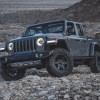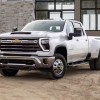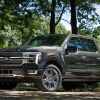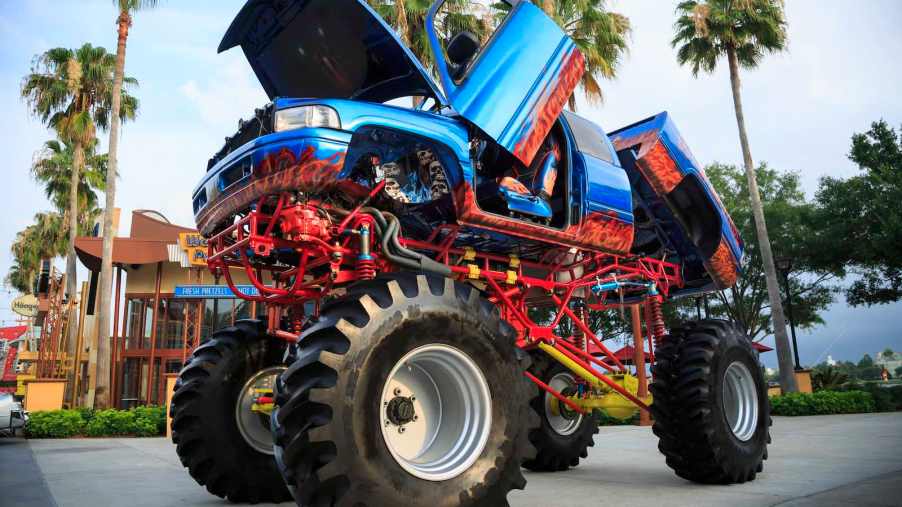
Is a Monster Truck Tall Enough to Drive Over Your Car Actually Street Legal?
So you were sitting in traffic the other day, staring at the back of a lifted truck on monster tires when you thought: If that rig rear-ended me, it would drive right over my car! How is that legal? Fair question! Every state has some law limiting road legal trucks, here’s the breakdown.
First of all, there’s no real limit on the diameter of tires allowed on the road. But legal tires must be rated for highway speeds by the manufacturer. And a truck on true monster truck tires may be too wide.
When you see a semi truck pulling a mobile home down the highway with “Wide load” signs, that means the entire load is over 8’6″ wide (102 inches). If a vehicle is wider than 80 inches, it needs special amber-colored marker lights to warn oncoming traffic (you can see these on the roof of semi trucks). But even with markers, many states limit passenger vehicles to 96 inches wide.
Many states don’t allow tires so wide that they stick past the fender of the truck. This is why you often see lifted trucks with fender extensions, marketed with the catchy name “fender flares.”
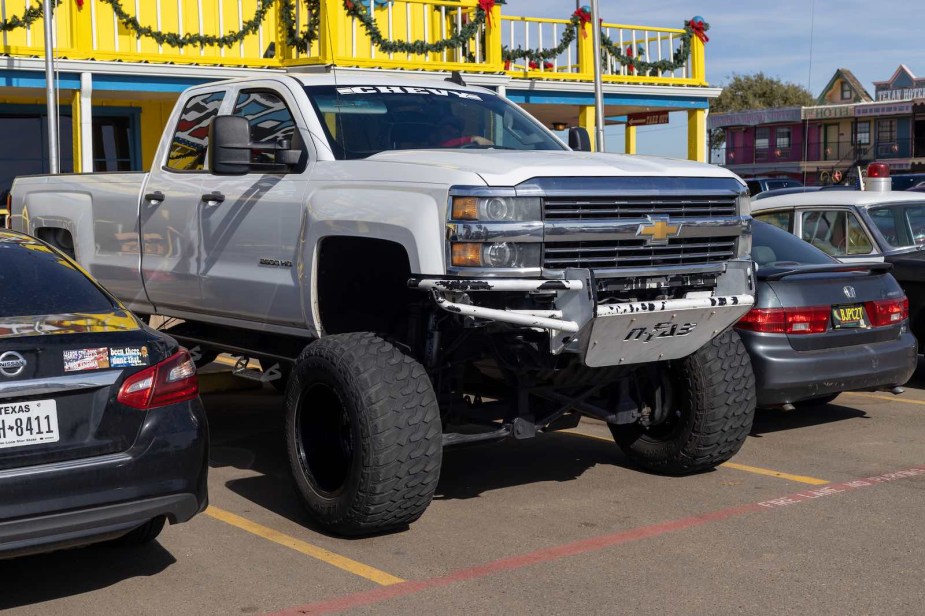
Now that we have tire size and vehicle width out of the way, let’s get in to height. There are many ways to measure a truck’s height: You can measure body height, from either the headlights to the ground or the bottom of the bumper to the ground. You can also measure how many inches of “lift” or height increase the truck has.
Lift kits for trucks are labeled with how many inches they will lift the truck, so outlawing certain kits is an easy way to regulate truck height. For example, California doesn’t allow any kits that lift a truck more than five inches above its stock height. According to LiftLaws.com, Connecticut outlaws anything above four inches.
Measuring body height, often from a point between the headlights, to the ground, seems simple enough. But modern trucks continue getting higher and their grilles continue getting taller. This is a problem, as it causes blind spots. But it is not regulated on the state level.
Measuring from the bottom of the bumper to the ground is a simple measurement. It also prevents the problem from the beginning of this article: driving over passenger cars in an accident. Some states take this measurement from any bumper (as opposed to the original bumper). So some lifted truck builders install a second, lower bumper when they lift their truck. Why? So they can take it off while they off-road to climb over larger obstacles.
The lifted truck measurement getting the most attention these days is the difference between the front and rear of the vehicle. This is because of a trend to lift only the front of a truck for a “squatted” stance. States are beginning to outlaw too dramatic an angle because it severely limits the driver’s visibility.
Next, read about the states that allow passengers in the bed of a pickup truck or see some common lift kit myths in the video below:
